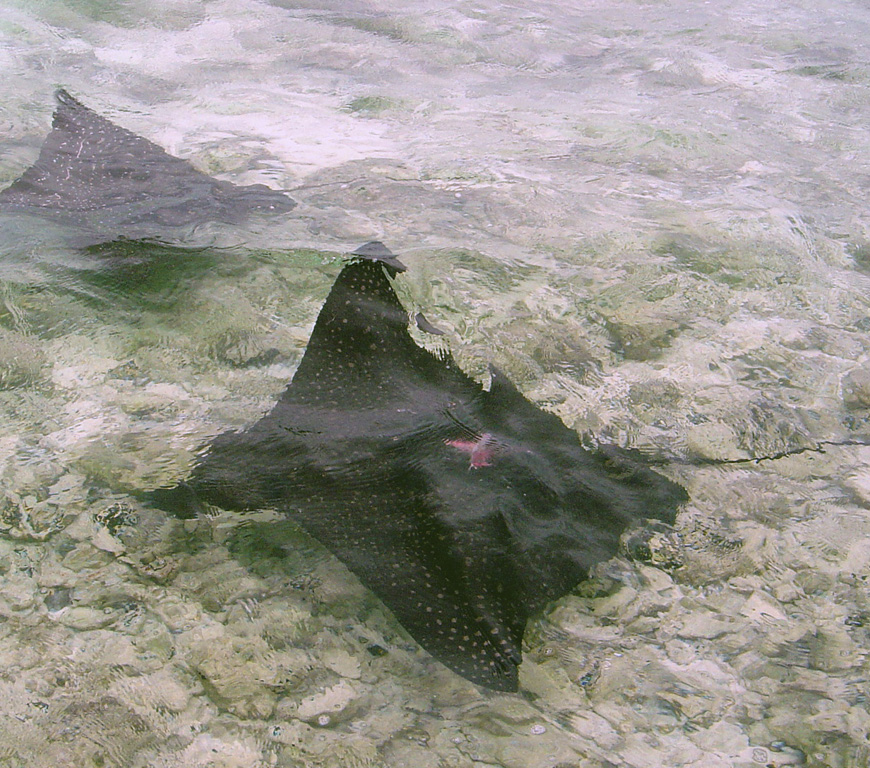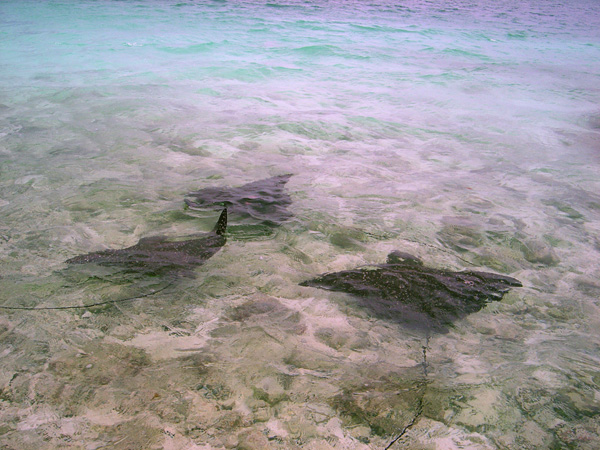Monday, September 10, 2012

A spotted eagle ray, probably with a shark bite on its back, forages for food in shallow water at Palmyra Atoll.
Reader John Floyd emailed that on his daily walk to the north end of Kailua Beach, he crosses the bridge over the Kawainui Canal. Three times this month John spotted eagle rays in the canal. “Do you know if they seasonally go upstream, perhaps to bear their young, or do you think they’re just trying to broaden their culinary experiences?”
Likely the rays found something tasty to eat in the canal. Nowhere in my reading did I find that Hawaii’s eagle rays swim up canals or estuaries during certain times of year. I did, however, learn that they have been seen giving birth in Kaneohe Bay, Pearl Harbor and off southern Molokai in October, November and December.
Pregnant rays sometimes expel their offspring, usually four, during leaps from the water. One hypothesis is that the leaps help the female give birth. But nonpregnant rays also occasionally pop from the water, either straight in the air, dolphin style, or in cartwheels with wings outstretched.
It’s difficult to know why rays leap. Some speculate that it’s a way to disappear from pursuing sharks, rays’ main predators. Others postulate that jumps are efforts to dislodge pesky remoras (suckerfish).

I would offer another possibility for the jumping: It might be fun. Dolphins appear to leap and spin for fun. Why not spotted eagle rays, a species with one of the largest brain-to-body-weight ratios of any fish?
Of the 10 species of eagle rays that swim the world’s tropical oceans, only one graces Hawaii waters, the spotted eagle ray, named after the white spots on its black or dark gray body.
And what a body it is. Eagle rays are well named, flapping their long wings, sometimes in squadrons of a dozen or more, as gracefully as eagles.
The width of an eagle ray’s body can be nearly twice its length, the largest measuring 71⁄2 feet across. Such big eagle rays are also heavy, weighing up to a massive 507 pounds.
Eagle rays are the only members of their family with more than one stinger on their long tails, which are up to three times longer than the body is wide. That’s a 22-foot-long tail in the largest individuals. The whiplike tails bear from one to six venomous spines, used in defense only.
Eagle rays eat a wide variety of snails and bivalves, digging them from the ocean floor with a shovel-like snout. The rays also eat worms, crabs, shrimp, sea urchins and small fish.
I’m not sure what ray goodies lurk in the Kawainui Canal, but I think John was lucky to have seen eagle rays foraging there. If his good ray luck holds out, maybe he will report that he saw an aerial birth.
©2012 Susan Scott
